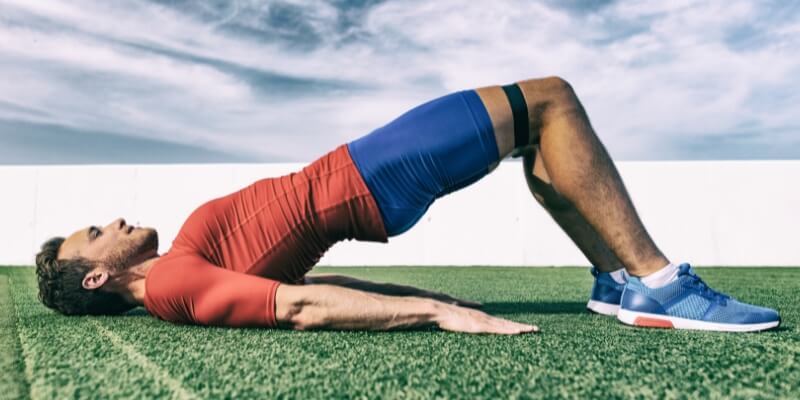
Know The Benefits of Resistance Training for Your Health
Resistance training, also known as strength training, is a powerful tool in improving overall health and fitness. It involves exercises that make your muscles work against a weight or force, providing a wide range of health benefits that contribute to a healthier lifestyle.
By engaging in resistance training, you’re not only enhancing your physical appearance but also supporting your body’s health in numerous ways. It’s a practical approach to fitness that fits into any lifestyle, offering significant benefits that go beyond the surface.
Whether you’re looking to build muscle, lose weight, or simply enhance your daily functional abilities, resistance training can be tailored to meet your goals. At Core Physiotherapy & Exercise Centres, we emphasise the importance of resistance training in any fitness regimen, acknowledging its role in promoting better health and wellbeing.

What are the Benefits of Resistance Training?
Resistance training stands out for its ability to improve muscle strength and endurance, making everyday activities easier and reducing the risk of injury. But the benefits extend far beyond muscle conditioning. This type of training also plays a crucial role in bone health, boosting bone density and reducing the risk of osteoporosis. Additionally, it can help in weight management by increasing metabolic rate, which aids in burning more calories even at rest.
Other notable benefits include:
- Enhanced posture and balance
- Improved glucose metabolism, which can help in managing diabetes
- Increased self-esteem and reduction in symptoms of depression and anxiety
- Incorporating resistance training into your routine is a smart move for anyone looking to improve their health and quality of life.
The benefits of resistance training go well beyond fitness. It strengthens your muscles and bones, helping you handle daily tasks with ease. It also boosts your metabolism, aiding in weight control. Regular resistance training can be a key part of living a healthier, more balanced life. By incorporating it into your routine, you take a significant step towards better overall wellbeing.

What is Resistance Training?
Resistance training encompasses a range of exercises designed to increase the strength and endurance of your muscles by making them work against a force, whether that’s weights, resistance bands, or your own body weight.
This method of training is highly versatile, allowing for a variety of exercises that can be performed at the gym, at home, or even on the go. It is classified into two main types: isotonic, where muscles contract through a range of motion as in weight lifting, and isometric, where muscles contract without movement, such as planks.
Both types are beneficial and can be incorporated into a workout routine to target different muscle groups, improve overall fitness, and support health goals.

Are Resistance and Strength Training the Same Thing?
Resistance training and strength training are terms often used interchangeably, but there are subtle differences. Strength training is a subset of resistance training focused specifically on building muscle strength and size. While all strength training is resistance training, not all resistance training is specifically aimed at building strength.
Similarities include their ability to improve muscle function, increase bone density, and enhance physical fitness. However, resistance training can also include endurance exercises that improve muscle stamina without necessarily increasing muscle size.
For those interested in starting or enhancing their fitness journey with resistance training, we at Core Physiotherapy & Exercise Centres are here to guide you. We understand the unique benefits of both resistance and strength training and can help tailor a program that meets your health and fitness goals.

FAQ
Should I see a doctor before starting resistance training
Yes, especially if you have existing health conditions or concerns. A doctor can provide personalised advice and ensure it’s safe for you to begin a resistance training program.
Does resistance training burn fat?
Absolutely, and the process is twofold. By increasing muscle mass, resistance training boosts your metabolism, which means your body burns more calories and fat, even when you’re not actively working out. This metabolic increase happens because muscle tissue requires more energy to maintain than fat tissue.
The afterburn effect, or excess post-exercise oxygen consumption (EPOC), means you continue burning calories after your workout ends. This makes resistance training an effective strategy for weight management and fat loss, integrating seamlessly with a balanced diet and regular exercise routine.
Is it OK to do resistance training every day?
For beginners, it’s wise to start with 2-3 resistance training sessions per week. This schedule allows your muscles to recover and rebuild stronger. As you gain experience and your body adapts, you may consider increasing the frequency of your workouts. However, it’s crucial to remember that muscles need time to recover between intense sessions.
To avoid overtraining and ensure continuous progress, focus on rotating the muscle groups you work on. For example, you might target your upper body one day and lower body the next. This approach ensures all muscle groups receive adequate attention and recovery time, fostering balanced strength and growth.
How can I do resistance training at home?
Resistance training at home is not only possible but can be incredibly effective. Start with bodyweight exercises, such as push-ups, squats, lunges, and planks, which require no equipment and can significantly improve strength and endurance. For added variety and challenge, consider investing in equipment like dumbbells, kettlebells, and resistance bands.
These tools can enhance your workouts by providing adjustable resistance levels and enabling a broader range of exercises. Additionally, online resources and fitness apps offer structured workout routines that can guide you through effective home training sessions, making it easier to stay motivated and achieve your fitness goals.
What is resistance training equipment?
Free weights, such as dumbbells and barbells, are ideal for building strength and muscle mass. Weight machines offer a more controlled movement, which can be beneficial for beginners or those focusing on specific muscle groups.
Resistance bands are versatile and portable, providing varying levels of resistance and are suitable for a range of exercises targeting both upper and lower body. Incorporating different types of equipment into your routine can keep workouts interesting and challenging, ensuring continued progress and preventing plateaus.
Is Pilates resistance training?
Yes, Pilates is a form of resistance training that emphasises control, precision, and flexibility. While it may not involve heavy weights, Pilates sessions often incorporate resistance bands, Pilates machines (like the Reformer), and the body’s own weight to strengthen and tone the muscles, particularly the core.
Pilates focuses on core strength, posture, and flexibility, making it a comprehensive workout that supports overall fitness. Its principles of concentration, control, and centering make it a mindful practice that strengthens the body-mind connection, offering benefits that extend beyond physical fitness to include mental and emotional wellbeing.
